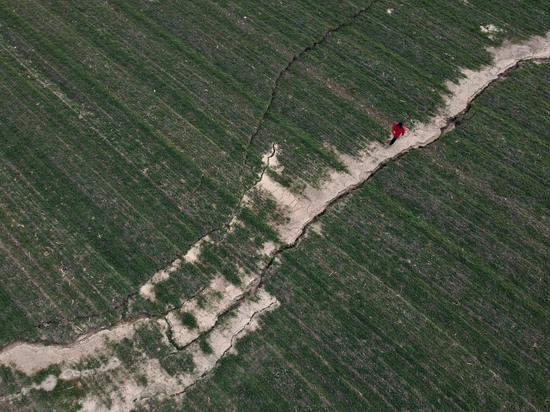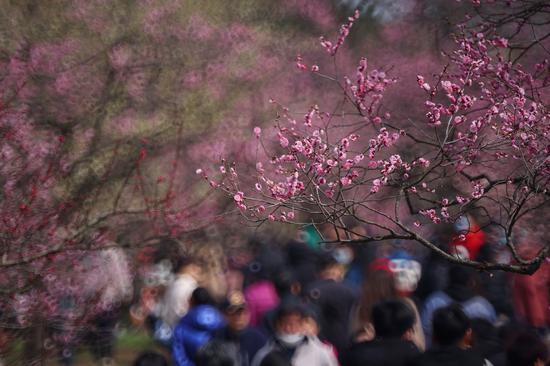
This aerial photo taken on Sept. 6, 2022 shows a view of Rongdong District in Xiong'an New Area, north China's Hebei Province. (Xinhua/Xing Guangli)
INNOVATION-DRIVEN DEVELOPMENT
In the Beijing Daxing International Airport Economic Zone, Du Qiuju, a staff member of Beijing AegleStem Therapeutics Co., Ltd. was doing her daily job in the lab -- carefully examining stem cell raw materials.
As a native of Gu'an County, Hebei Province, Du quit her job in her hometown a year ago and chose to embrace a new opportunity in the economic zone, because "it offers a better salary and is conducive to career development."
She doesn't have to worry about commuting distance. She usually rides a motorcycle for 40 minutes to get to the company. In addition, a rail transit line currently under construction, which is located close to her home, will make commuting more convenient in the future.
The Beijing Daxing International Airport sits at the junction of Beijing's Daxing District and Langfang in Hebei Province. The economic zone has a planned area of 150 square km in total and develops industries ranging from international medical care, and airport guarantee and support services, to international convention and exhibition spaces, comprehensive-purpose bonded areas, as well as aviation logistics.

This aerial photo taken on June 25, 2019 shows the terminal building of the Beijing Daxing International Airport in Beijing, capital of China. (Xinhua/Zhang Chenlin)
Due to its unique location advantages and rich policy support, more and more high-tech enterprises like AegleStem have settled there, while many talents from Hebei and Tianjin have been attracted there by superior jobs.
"Beijing has significant R&D strength, while Hebei offers relatively low land and labor costs. Enterprises there are very impressed by the complementary advantages of these two regions, which could combine to form synergistic development advantages," said Zhu Tianzhu, assistant director of the economic zone's administrative committee.
According to data from the National Bureau of Statistics (NBS), in 2021, the Beijing-Tianjin-Hebei region invested a total of 394.91 billion yuan in R&D, 2.1 times that of 2013, accounting for 14.1 percent of the national total.


















































 京公网安备 11010202009201号
京公网安备 11010202009201号